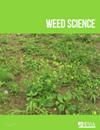弱化美国地质调查局农药国家合成项目对杂草科学家的影响
IF 2.5
2区 农林科学
Q2 AGRONOMY
引用次数: 0
摘要
杂草是对农艺、园艺和观赏作物生产的重大威胁,因为对资源的直接竞争可能导致大量产量不足(WSSA 2023)。对美国和加拿大研究数据的回顾表明,即使采用其他最佳管理措施,未经管理的杂草也有可能使玉米和大豆产量减少约50% (Soltani et al. 2016, 2017)。玉米和大豆的相关经济损失估计分别为267亿美元和172亿美元,这将是灾难性的。杂草也会间接地干扰农作物。例如,杂草可能阻碍或延迟收获作业(Smith et al. 2000),因污染而降低作物质量(Moore et al. 2004),并作为害虫和病原体的替代宿主(Chen et al. 2011;威斯勒和诺里斯2005)。其他生境,如牧场、湿地和其他自然和城市地区,也受到杂草和入侵植物物种的影响。不需要的植被的影响包括对基础设施的破坏、对娱乐空间的破坏、水流的改变、自然资源的退化、生物多样性的减少和物种迁移、生态系统服务的丧失以及其他影响(DiTomaso 2000;Jetter et al. 2021;尼尔2023;vilou et al. 2011)。本文章由计算机程序翻译,如有差异,请以英文原文为准。
Implications of weakening of the United States Geological Survey Pesticide National Synthesis Project for Weed Scientists
Abstract Weeds are a significant threat to the production of agronomic, horticultural, and ornamental crops, as direct competition for resources can result in substantial yield shortfalls (WSSA 2023). A review of research data generated across the United States and Canada indicated that unmanaged weeds have the potential to reduce corn and soybean production by approximately 50%, even when other best management practices are applied (Soltani et al. 2016, 2017). The associated economic losses, which were estimated at 26.7 and 17.2 billion USD for corn and soybeans, respectively, would be catastrophic. Weeds can also interfere with crops, indirectly. For example, weeds may impede or delay harvest operations (Smith et al. 2000), reduce crop quality because of contamination (Moore et al. 2004), and serve as alternate hosts for pests and pathogens (Chen et al. 2011; Wisler and Norris 2005). Other habitats, such as rangelands, wetlands, and other natural and urban areas, are also affected by weedy and invasive plant species. Impacts of unwanted vegetation can include damage to infrastructure, damage to recreational space, altered water flow, degraded natural resources, reduced biodiversity and species displacement, and a loss of ecosystem services, among other effects (DiTomaso 2000; Jetter et al. 2021; Neal 2023; Vilà et al. 2011).
求助全文
通过发布文献求助,成功后即可免费获取论文全文。
去求助
来源期刊

Weed Science
农林科学-农艺学
CiteScore
4.60
自引率
12.00%
发文量
64
审稿时长
12-24 weeks
期刊介绍:
Weed Science publishes original research and scholarship in the form of peer-reviewed articles focused on fundamental research directly related to all aspects of weed science in agricultural systems. Topics for Weed Science include:
- the biology and ecology of weeds in agricultural, forestry, aquatic, turf, recreational, rights-of-way and other settings, genetics of weeds
- herbicide resistance, chemistry, biochemistry, physiology and molecular action of herbicides and plant growth regulators used to manage undesirable vegetation
- ecology of cropping and other agricultural systems as they relate to weed management
- biological and ecological aspects of weed control tools including biological agents, and herbicide resistant crops
- effect of weed management on soil, air and water.
 求助内容:
求助内容: 应助结果提醒方式:
应助结果提醒方式:


